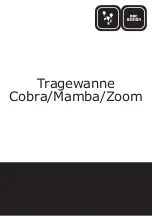
S5-115F Manual
Analog Value Processing
Depending on the design of the current or voltage sensor, you must observe different conditions
when connecting analog input modules.
!
Important
Unused inputs must be terminated with a voltage divider or shunt ( Table 6-1).
In the case of the 498-1AA11 module, the unused inputs must be short-circuited (M+
and M- in each case).
Other modules require no additional circuits.
The galvanic isolation between analog inputs and L+ or L- is revoked when using the
498-7LA51 module for a 2-wire transducer!
Connecting sensors
Certain precautions must be taken so that the permissible potential difference V
CM
is not
exceeded. These precautions differ for floating and nonfloating sensors.
For floating sensors, the measuring circuit can accept a potential to ground that exceeds the
permissible potential difference V
CM
(see maximum values of the individual modules).
Prevent this by connecting the negative potential of the sensor to the reference voltage of the
module (reference bus).
Example:
Temperature is measured on a busbar with an isolated thermocouple.
Under worst case conditions, the measuring circuit can accept a potential that would
destroy the module. Prevent this with an equipotential bonding conductor
( Figure 6-2).
Possible causes:
•
Static charge
•
Transfer resistances through which the measuring circuit assumes the potential of
the busbar (e.g. 230 V AC)
For nonfloating sensors, the permissible potential difference V
CM
between the inputs and the
reference bus
must not be exceeded.
EWA 4NEB 811 6148-02
6-3
















































